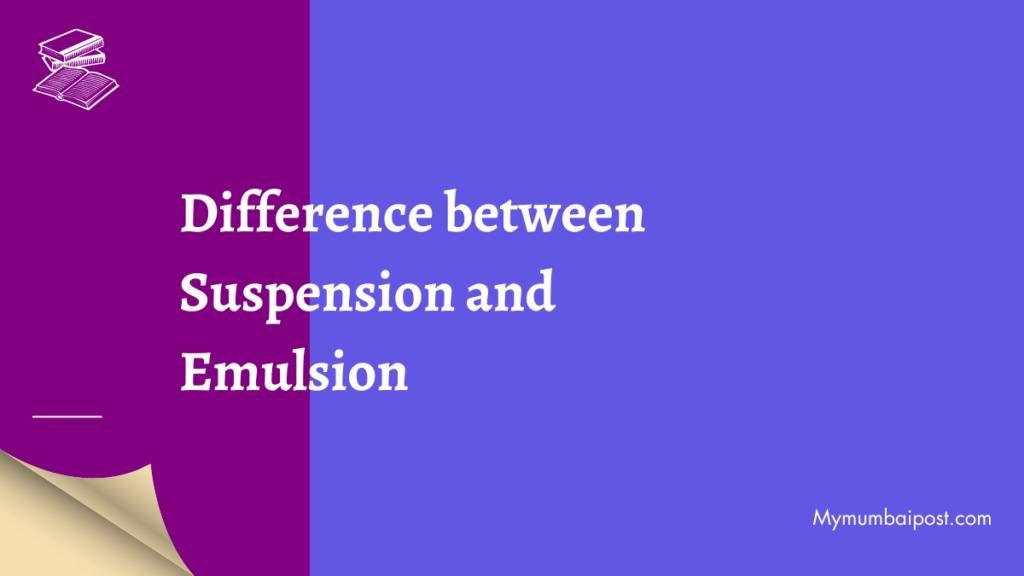
Understand the Key Difference between Suspension and Emulsion
Greetings, dear reader! Today, we’ll be exploring the fascinating world of chemistry by discussing the difference between suspension and emulsion. Are you curious to learn more about these two distinct states of matter? Let’s dive in!
Difference between suspension and emulsion
Suspensions and emulsions are two common types of mixtures used in various industries such as pharmaceuticals, cosmetics, and food production. While they may appear similar, there are key differences between the two that affect their properties and applications.
Composition: Suspensions are mixtures of solid particles dispersed in a liquid, while emulsions are mixtures of two immiscible liquids, one of which is dispersed in the other.
Also Read: Explore 15 Key Difference between Business profession and Employment
Stability: Emulsions are generally less stable than suspensions because the dispersed liquid tends to separate over time. Suspensions, on the other hand, may settle over time but can usually be easily re-suspended by shaking or stirring.
Appearance: Suspensions are usually opaque and may have visible particles, while emulsions are often translucent or transparent.
Particle size: Suspended particles are typically larger than those in emulsions, which can be composed of very small droplets.
Also Read: Explore 15 Key Difference between Cheque and Bill of exchange
Homogeneity: Emulsions are typically more homogeneous than suspensions because the dispersed liquid is evenly distributed throughout the mixture.
Viscosity: Emulsions often have a higher viscosity than suspensions because the dispersed liquid adds to the overall viscosity of the mixture.
Application: Suspensions are often used in medications, while emulsions are commonly used in food products and cosmetics.
Also Read: Understand the Basic Difference between MP and MLA
Preparation: Suspensions are typically prepared by mixing the solid particles with the liquid and then allowing the mixture to settle, while emulsions require the use of an emulsifying agent to prevent the two liquids from separating.
Shelf life: Emulsions generally have a shorter shelf life than suspensions because they are more prone to separation over time.
Stability under stress: Suspensions are often more stable under stress, such as during transport or handling, than emulsions due to their larger particle size and ability to be re-suspended.
While suspensions and emulsions may share some similarities, their differences in composition, stability, appearance, particle size, homogeneity, viscosity, application, preparation, shelf life, and stability under stress make them suitable for different applications in various industries.